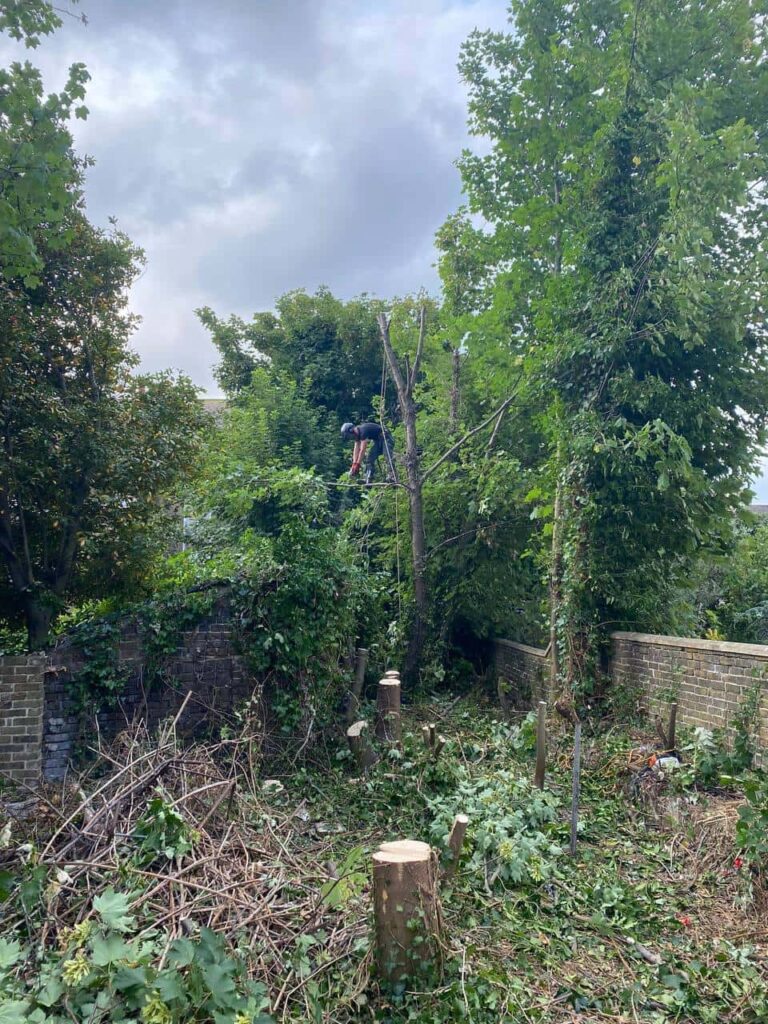Introduction
Well-maintained hedges not only define boundaries and enhance privacy but also add character and structure to a garden. However, when left unattended, they can quickly become overgrown, sparse, or unhealthy. At Sudbury Tree Surgeons, we often help homeowners in Sudbury, Suffolk restore tired, overgrown hedges to their former beauty through professional rejuvenation techniques that promote new growth and long-term vitality.
Understanding Why Hedges Become Overgrown
Hedges grow rapidly during the warmer months, and without regular maintenance, they can lose shape and density. Common reasons for hedge decline include:
- Neglect or infrequent trimming – allowing unchecked growth that causes inner branches to die off.
- Incorrect cutting techniques – harsh pruning can lead to bare patches or structural weakness.
- Soil exhaustion – a lack of nutrients affects growth and foliage colour.
- Pest and disease issues – infestations can reduce density and damage roots.
Recognising these signs early helps you decide whether trimming alone will suffice or whether rejuvenation pruning is required.
Assessing the Condition of Your Hedge
Before rejuvenating a hedge, it’s important to assess its current condition. At Sudbury Tree Surgeons, we evaluate:
- The hedge type – deciduous species such as beech, hornbeam, and hawthorn respond differently to rejuvenation than evergreens like yew or laurel.
- The age and size – older hedges may need gradual reduction over multiple years.
- The growth pattern – determining where new shoots are forming helps guide the pruning plan.
- The overall health – ensuring the hedge is free from disease before major work begins.
This initial assessment ensures that the right rejuvenation approach is used, promoting healthy regrowth without causing unnecessary stress to the plant.
Step-by-Step: How to Rejuvenate Overgrown Hedges
Step 1: Reduce Height and Width Gradually
Cutting too much at once can shock the hedge. Instead, it’s best to reduce its size over two or three seasons. Start by trimming one side and the top, leaving the other side intact to support photosynthesis. Once new growth establishes, the remaining side can be reduced the following year.
Step 2: Remove Dead and Diseased Wood
Eliminating dead branches encourages air circulation and directs energy to healthy shoots. Removing diseased sections early prevents further spread and allows the hedge to recover faster.
Step 3: Encourage New Growth
After cutting back, feed the hedge with organic matter or a balanced fertiliser to stimulate regrowth. Consistent watering during dry periods supports recovery, particularly in the first growing season after rejuvenation.
Step 4: Shape for Future Growth
A healthy hedge should be wider at the base and narrower at the top. This shape ensures even sunlight exposure, helping lower branches remain leafy and dense. Professional shaping by experts like Sudbury Tree Surgeons maintains both structure and aesthetic appeal.
Step 5: Maintain Regular Trimming
Once rejuvenated, trimming once or twice a year—depending on the species—will keep the hedge compact and well-formed. Avoid cutting during the bird nesting season (typically March to August) to protect wildlife.
The Benefits of Professional Hedge Rejuvenation
While light trimming can be managed by homeowners, rejuvenating overgrown hedges requires knowledge of plant behaviour, timing, and technique. Working with Sudbury Tree Surgeons ensures:
- Precise, species-appropriate pruning that encourages regrowth.
- Safe removal of large or difficult sections.
- Improved garden appearance and property value.
- Long-lasting health for your hedge with minimal regrowth issues.
Conclusion
Rejuvenating old, overgrown hedges is a process that takes patience, timing, and expertise. When done correctly, it restores density, colour, and vitality—transforming neglected hedges into thriving garden features once again. The skilled team at Sudbury Tree Surgeons in Sudbury, Suffolk can help you assess, cut back, and shape your hedge to ensure it remains strong and beautiful for years to come.
If your hedges are looking tired or unmanageable, contact Sudbury Tree Surgeons today to bring them back to life with expert rejuvenation care.
Call us on: 01787 322 388
Click here to find out more about Sudbury Tree Surgeons
Click here to complete our contact form and see how we can help with your tree needs.

